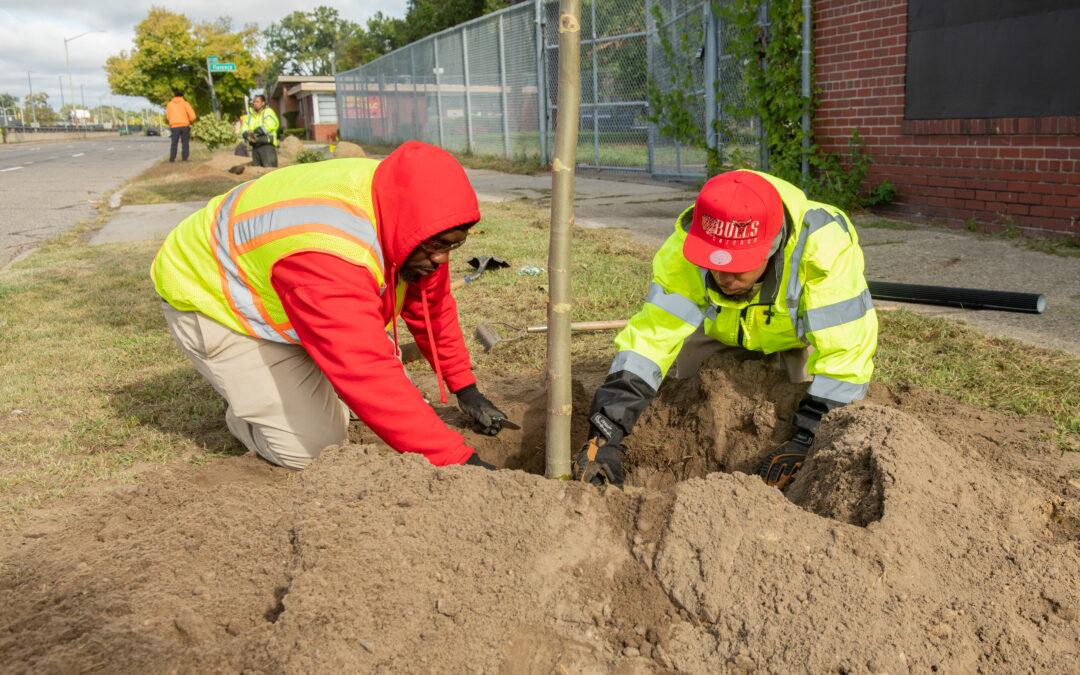When it comes to planting trees, putting the right one in the right place plays a big part of making sure it thrives. But sometimes, the right place means more than in rich soil or away from power lines.
Enter the Tree Equity Score Analyzer. Pioneered by American Forests, communities across the United States can now see how their city, neighborhood and even street compares when it comes to tree canopy. The tool was recently revamped to feature metrics like heat disparity, high resolution tree canopy data that’s powered by Google and even a function that lets you see what planting different trees will do to a specific parcel of land.
The goal of tree equity is to ensure that urban neighborhoods have enough trees so every person benefits. This is also the basis of the Detroit Tree Equity Partnership (DTEP), a pilot program that aims to plant 75,000 trees across targeted areas of the city over five years. DTEP brings groups like American Forests and the Greening of Detroit together the City of Detroit and companies like founding partner DTE Energy to work together to tackle the tree canopy disparity problem. The program has already made enormous strides, planting more than 10,000 trees and training 70 people in the art of urban forestry since DTEP’s launch in October 2022.
By using tree equity scores, the partnership can find the parts of the city that have disproportionately fewer trees. These areas are frequently home to people of color and individuals with lower incomes, making these populations more likely to be impacted by the lack of trees.
Having a robust tree canopy does more than make a neighborhood look nice. It also lowers asthma rates, keeps temperatures cooler in summer and warmer in winter, reduces stormwater runoff and plenty more. Increasing a neighborhood’s tree equity score can help ensure that more people have access to all these benefits.
To use the Tree Equity Score Analyzer, visit treeequityscore.org and use the map to explore different metrics of your neighborhood. Type in your address on the upper left and see if your street is warmer or cooler than those around it, how your tree canopy compares and what planting more trees will do for your community.
Once you’ve explored your neighborhood and beyond, you can use the information from the tool to effect real change in your community. You can plant a tree in your yard, reach out to local leaders to share what you learned or find a volunteer event through DTEP to experience firsthand how planting trees can help your neighborhood.
